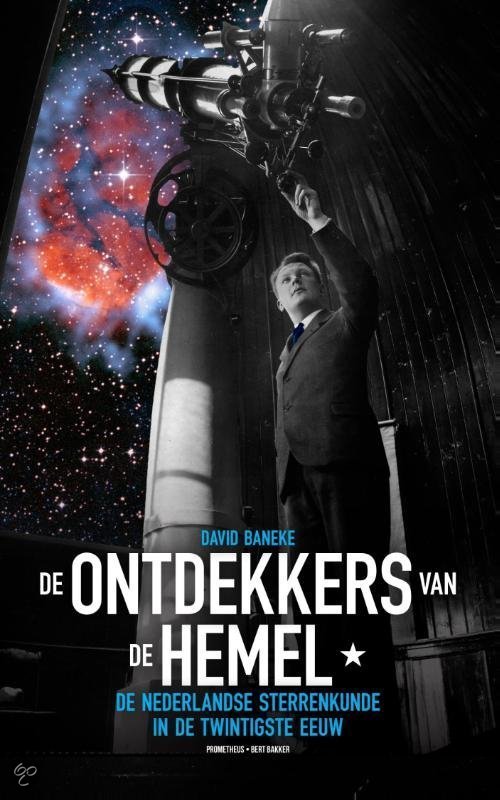Daily Image
10-03-2015Dutch Astronomy in the 20th Century
| Submitter: | Jan Noordam |
| Description: | Published this week: De ontdekkers van de hemel: De Nederlandse sterrenkunde in de twintigste eeuw, by science historian David Baneke. There is something peculiar about astronomy in the Netherlands. Despite its cloudy skies and ubiquitous city lights, NL has been a major astronomical power for more than a century, with giants like Kapteyn, Minnaert and Oort. How come? Who were these people? And why the Netherlands? In The Discoverers of the Heavens, Dr Baneke shows how the story of Dutch astronomy is entangled with the political, economical and cultural history of this remarkable country. Of course it helped that radio waves from the sky easily penetrate the Ruysdael clouds, and can be studied day and night, right in our back yard. Prof Oort was the first astronomer to grasp the potential of radio astronomy. This led the Netherlands to lead this important(*) new field with world class radio telescopes like the Dwingeloo 25m dish (1956), the WSRT (1970) and LOFAR (2010). Not surprisingly, David regularly visited ASTRON to research his book. But the rise of Dutch astronomy started with Kapteyn, half a century before radio astronomy. An important factor was the close collaboration with other vigorous scientific communities, particularly in South Africa and (later) the US. In the case of Kapteyn this led to the amusing situation that he was honoured in London, Paris, Berlin, St Petersburg and Washington before the Dutch themselves realised his stature. After Kapteyn, many Dutch astronomers have held influential positions abroad, and vice versa. The book may be ordered at: http://webwinkel.uitgeverijprometheus.nl/book/david-baneke It is written in Dutch, but that should not be a problem for many astronomers who have spent the most fertile years of their lives over here. (*) Most of the Nobel (physics) prizes that have been awarded for astronomical subjects were for radio astronomy. Unfortunately, the Dutch tend to be too modest to be noticed in this way. |
| Copyright: | Prometheus |
| Tweet |  |
